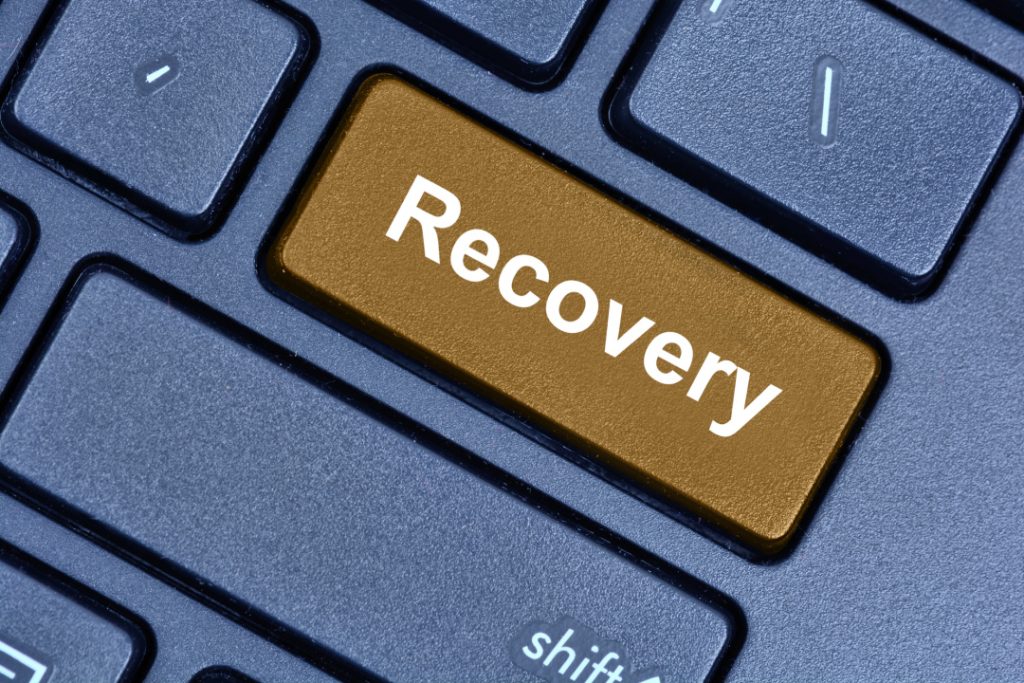IT asset disposition is an umbrella term covering everything from decommissioning to disposal and resale. It refers to the steps organizations should take at the end of an asset’s lifecycle to meet their security and sustainability requirements, while maximizing asset value where possible.
Asset recovery is often left out of the discussion. Few organizations have processes for recovering residual value from their decommissioned IT assets. They’re leaving money on the table — or, worse, throwing it in a dumpster.
Also called “investment recovery,” IT asset recovery refers to processes for capturing any remaining value from end-of-life IT assets. Any asset that is still operational holds some value, even if it’s only a small fraction of its original purchase price. Organizations can recover this residual value by redeploying IT assets within their environments or reselling them in the marketplace for used equipment. As such, IT asset recovery can put money back into the IT budget and deliver other business benefits as well.
Benefits of IT Asset Recovery
Obviously, the primary benefits of IT asset recovery are both data security and financial, but it goes beyond reclaiming some of the capital investment in the asset. Every device is wiped during the reclamation process, ensuring an organizations data is never exposed and any reference to the customer is removed when the asset is sanitized, including the removal of any tags or other identifying markings. By refurbishing and redeploying assets, organizations can maximize their lifetime value and save the cost of buying new equipment. Reselling the asset can help cash flow while eliminating the cost and risk of disposal. Donating the asset to a school or charity can provide some tax benefits.

IT asset recovery can also help organizations meet their sustainability objectives. Remember the waste hierarchy — “reduce” and “reuse” come before “recycle.” Reusing and reselling assets minimizes the amount of e-waste that must be recycled or disposed of. The process is sometimes called “upcycling” because it turns waste into something of value.
Why Outsource IT Asset Disposition
In many organizations, overburdened IT teams are tasked with decommissioning and disposing of end-of-life assets and ensuring that all sensitive data is removed. They simply lack the time and resources to Identify new uses for assets or resell them in the marketplace. A better approach is to outsource IT asset management to KST Data.
KST’s IT asset management services encompass the full lifecycle of your technology, from procurement, configuration and delivery to ultimate disposal. Our processes are designed to maximize the value of IT assets by finding new uses for them within your environment. Assets that no longer meet your requirements are prepared for sale on the secondary market so you can capture as much residual value as possible. When assets truly reach end-of-life, we dispose of those assets securely and sustainably.
The KST Data Process
Our first step is to wipe all data from the asset and remove any asset tags or other designations that could associate the asset with your organization. Our experts then assess the asset’s age, the type of CPU, how much memory it has and other factors to determine the best disposition. We will prepare it for redeployment in your environment or prepare to resell it on the secondary market. This “circular economy” approach emphasizes asset value creation and sustainability.
If the asset no longer has value, we’ll break it down into its component parts, separating various types of metals, plastics and any potentially toxic materials. Each of these materials is recycled by one of our trusted partners to minimize the environmental impact. All of this is tracked through our advanced tools, providing assurance that the disposal process was handled properly.
Maximizing the value of IT assets while minimizing e-waste requires a full-lifecycle approach. Let KST manage your IT assets in a way that recovers as much of their value as possible while meeting your security requirements and sustainability objectives.
